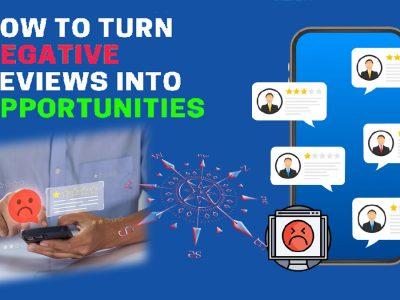Published on 06/22/2024 – Last Updated on 06/22/2024 by OTC
Data and information have become the cornerstones of sustainable growth and competitive advantage.
Data mining, two words that are easily interpreted as it is, poses the power to unlock a wealth of insights that can transform their operations, enhance customer relationships, and drive long-term success.
Let’s explore what data mining is, how it works, and how B2B businesses can leverage it for success.
What is Data Mining?
Data mining is the process of extracting valuable information and patterns from large datasets. It is a complex process that involves a series of steps and the use of sophisticated algorithms to discover hidden patterns and insights in large datasets. This process can be applied across various types of data, such as transactional, relational, or unstructured data like text and images.
Data mining is an interdisciplinary field combining techniques from computer science, statistics, and mathematics to process and analyze data. It requires a deep understanding of the domain to interpret the data correctly.
Continue ReadingAt its core, data mining is the art of transforming raw data into actionable intelligence.
It involves several key steps:
- Data Collection: Gathering relevant data from various sources, such as customer interactions, sales records, and market research.
- Data Preparation: Cleaning, organizing, and formatting the data to ensure it is ready for analysis.
- Data Exploration: Analyzing the data to identify patterns, trends, and relationships that may not be immediately apparent.
- Model Building: Developing predictive models using advanced algorithms and machine learning techniques.
- Deployment: Applying the insights gained from the data mining process to drive business decisions and strategies.
The advantages of data mining for B2B companies are numerous and far-reaching. By harnessing the power of data, these businesses can:
- Enhance Customer Insights: Gain a deeper understanding of their target customers, including their preferences, pain points, and purchasing behavior.
- Improve Sales and Marketing Strategies: Identify the most effective marketing channels, personalize their outreach, and optimize their sales processes.
- Optimize Operations: Streamline their supply chain, reduce costs, and improve overall efficiency.
- Identify New Opportunities: Uncover untapped market segments, develop innovative products or services, and stay ahead of the competition.
- Mitigate Risks: Anticipate and address potential challenges, such as changes in the market, regulatory shifts, or supplier disruptions.
The Evolution of Data Mining
In the past, data mining was a manual process that required extensive human effort. Analysts would sift through data manually to find patterns. However, with the advent of computers, the process became automated, faster, and more efficient. The evolution of data mining is closely tied to advancements in database technology and computational power. The increased storage capacity and processing power of modern computers have allowed businesses to handle larger datasets and more complex algorithms.
The development of machine learning algorithms has significantly advanced data mining capabilities. These algorithms can learn from data and improve over time, making the data mining process more accurate and insightful.
Data Mining, AI, and Machine Learning
While data mining is a foundational technique for extracting insights from data, AI and machine learning enhance this process with advanced algorithms and predictive models.
Data mining involves the use of various techniques and algorithms to discover hidden patterns, relationships, and trends within the data. AI and machine learning, on the other hand, focus on building algorithms and models that can learn from data and make predictions or decisions without being explicitly programmed. Data mining provides the foundation for AI and machine learning processes by supplying the necessary data for training and testing these algorithms and models.
AI provides advanced algorithms and models that enhance the data mining process, enabling more complex analyses and predictions whereas machine learning techniques are commonly used in data mining to build predictive models, identify patterns, and make data-driven decisions.
Additionally, data mining techniques can also be used to preprocess and transform raw data before feeding it into machine learning algorithms. This involves tasks such as data cleaning, feature selection, and dimensionality reduction, which help improve the quality and efficiency of the learning process.
Data mining is an essential component of AI and machine learning processes, providing the necessary insights and data preparation steps required for training and deploying intelligent systems. Without effective data mining techniques, the performance and accuracy of AI and machine learning models would be significantly compromised. However, together, they enable B2B companies to uncover deeper insights and drive more informed business decisions.
How Does Data Mining Work?
Data mining is a multi-step process that transforms raw data into actionable insights. Several stages are involved, each critical to the success of the data mining project.
Data Cleaning
Before any analysis can begin, the data must be cleaned. This involves removing outliers, correcting errors, and dealing with missing values. Clean data is crucial for accurate analysis.
Data cleaning also includes normalization, which adjusts the values measured on different scales to a notionally common scale. This prevents attributes with initially larger ranges from outweighing attributes with smaller ranges. Another aspect of data cleaning is de-duplication, where redundant or repeated data is identified and removed. This ensures that the data mining algorithms are not biased by unnecessary repetition of data points.
Data Integration
Data often comes from multiple sources and needs to be combined into a single dataset. This process is called data integration. During integration, data from different databases, files, or formats is merged. Care must be taken to maintain the integrity of the data and to handle any conflicts that arise from different data sources.
Data integration also involves ensuring consistency in data types and units across the combined dataset, which is vital for accurate analysis.
Data Selection
Choosing the right subset of data is critical for the analysis. This involves selecting the data that is relevant to the analysis goals. Data selection is often guided by domain knowledge and the objectives of the project. It ensures that the data mining process is efficient by focusing only on the data that will yield the most valuable insights.
Data reduction techniques may also be applied during this phase to reduce the volume but produce the same or similar analytical results.
Data Transformation
Once the data is cleaned and selected, it is transformed into a format suitable for mining. This can involve a variety of techniques. Normalization, aggregation, and generalization are common data transformation tasks. They prepare the data for the mining process by structuring it in a way that enhances the mining process.
Data transformation also includes creating new calculated fields or dimensions that may be more informative for the patterns being sought.
Data Mining
At this stage, the actual mining takes place. Algorithms are applied to the transformed data to uncover patterns and insights.
Different algorithms are chosen based on the desired outcome, whether it’s classification, regression, clustering, or another task. This phase is iterative and may require going back to previous steps to refine the data or the model as new insights are discovered.
Evaluation and Interpretation
The patterns and insights generated by the mining process must be evaluated and interpreted within the context of the business objectives. This involves validating the findings against known data, checking for consistency, and ensuring that the results are actionable and relevant.
The interpretation of mined data can reveal trends, patterns, and relationships that were previously unknown and can guide strategic business decisions.
Deployment
The insights gained from data mining are not useful unless they are put into action. This is the deployment phase. The results of data mining may be presented in reports, visualizations, or as inputs into further analytical systems.
Deployment may also include the integration of data mining findings into business processes or the development of new processes to take advantage of the insights gained. The end result of the data mining process is a set of valuable insights that can inform business decisions and strategies.
How Can B2B Businesses Leverage Data Mining?
B2B businesses can leverage data mining in a myriad of ways to improve operations, enhance customer experiences, and drive revenue. Here are some of the areas where data mining can be particularly beneficial:
Identifying Target Markets
Understanding the market is crucial for any B2B business. Data mining helps identify not just the current market, but also potential new markets. By examining customer data and market trends, businesses can pinpoint which segments are most profitable or have the highest growth potential. Data mining can reveal unmet needs in the market, allowing businesses to develop solutions that meet those needs before their competitors do.
Data Mining vs. Traditional Market Research: A Comparison
While traditional market research methods, such as surveys and focus groups, can provide valuable insights, data mining offers several distinct advantages:
| Criteria | Data Mining | Traditional Market Research |
| Data Source | Vast, diverse, and often real-time data | Limited to specific data collection methods |
| Scalability | Able to handle large, complex datasets | Constrained by sample size and scope |
| Insights | Uncovers hidden patterns and trends | Relies on direct feedback and self-reported information |
| Timeliness | Provides near-immediate insights | Can be time-consuming and less responsive to changes |
| Cost-Effectiveness | Leverages existing data, reducing research costs | Requires dedicated resources and investments |
Enhancing Market Positioning
Data mining can help B2B companies refine their market positioning by understanding the unique selling propositions (USPs) that resonate with their customers. By analyzing customer feedback and market data, businesses can tweak their messaging to highlight the features that are most valued by their target audience. This insight can guide the creation of more effective marketing materials and sales strategies that speak directly to the customers’ needs.
Discovering Cross-Selling and Up-Selling Opportunities
Through the analysis of customer purchase histories and behaviors, data mining can identify opportunities for cross-selling and up-selling. This could involve recommending additional services or products that complement what the customer has already purchased.
Businesses can use these insights to tailor their offers, increasing the average transaction value and customer lifetime value.
Improving Customer Segmentation
Customer segmentation is the practice of dividing a company’s customers into groups that reflect similarity among customers in each group. Data mining enhances this process by identifying the most meaningful and actionable segments.
Tailoring Products and Services
By understanding the different needs and behaviors of each segment, B2B businesses can tailor their products and services to better meet those needs. This can lead to the development of specialized offerings that cater to the specific requirements of each customer group.
Optimizing Marketing Campaigns
Data mining helps in crafting marketing campaigns that are targeted to the preferences and behaviors of different customer segments. This results in higher engagement rates, better conversion rates, and a more efficient allocation of marketing resources.
Enhancing Customer Relationships
Data mining provides insights into customer preferences and pain points, which can be used to build stronger, more personalized relationships. By addressing the specific needs and concerns of each segment, businesses can improve customer satisfaction and loyalty.
Predicting Customer Behavior
Predictive analytics is a significant benefit of data mining, and it can have profound implications for B2B businesses. Whether it’s identifying purchasing patterns or analyzing customer sentiment, businesses can uncover patterns, trends, and insights that enable them to make accurate predictions about future customer actions.
Forecasting Purchase Trends
By analyzing past customer behavior, data mining can forecast future purchase trends, allowing businesses to anticipate demand and adjust inventory accordingly. This can help in planning production schedules, managing supply chains, and ensuring that products are available when customers want them.
Anticipating Market Shifts
Predictive models built through data mining can also anticipate broader market shifts, giving B2B businesses a head start in adjusting their strategies. This could include changes in customer preferences, technological advancements, or emerging industry regulations.
Developing Proactive Customer Service
Data mining can predict potential issues or questions customers might have, allowing businesses to provide proactive customer service. This proactive approach can improve customer satisfaction and can even prevent issues before they arise, reducing the burden on customer service teams.
Identifying Areas for Improvement
Data mining offers a critical look at various aspects of a business, revealing areas where improvements can be made.
Enhancing Product Quality
By analyzing customer feedback and product performance data, companies can identify and address quality issues in their products. This continuous improvement can lead to higher customer satisfaction and a stronger reputation in the market.
Streamlining Operations
Data mining can uncover inefficiencies in business operations, from production to distribution to customer service. By addressing these inefficiencies, companies can reduce costs, improve turnaround times, and deliver better service to their customers.
Innovating Business Practices
The insights gained from data mining can inspire innovative changes to business practices, potentially leading to new and improved ways of operating. This could involve adopting new technologies, entering new markets, or rethinking the customer experience.
Data Information Equates to Power
Data information, as an umbrella term, provides valuable insights into the target audience, helps with customer segmentation, enables effective tracking and measurement of marketing efforts, facilitates lead generation and nurturing, and allows businesses to measure customer satisfaction and loyalty.
For More and Moving Ahead…
Talk to PHMC GPE Team !
Discover More:

















Comments